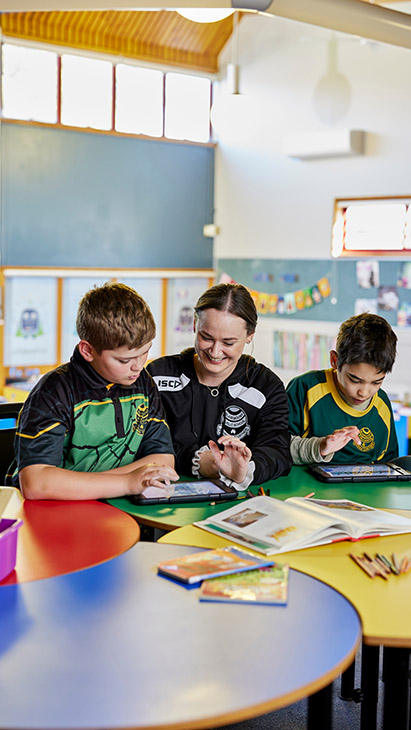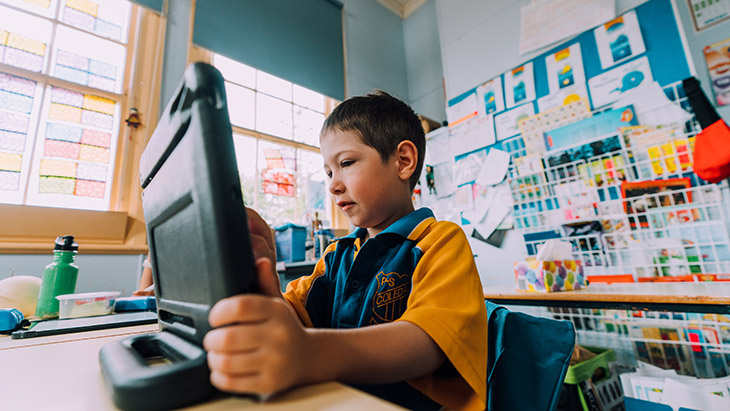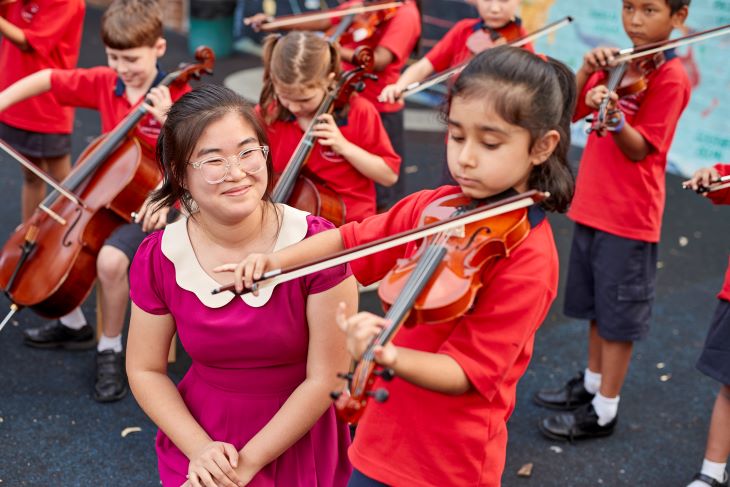Inclusive questions
Questions that support strengths- and evidence-based inclusive practice
The following questions can help teachers develop personalised, strengths- and evidence-based approaches to learning and teaching. These questions can be used when a teacher identifies a situation where a student may require additional support to participate.
The purpose of these questions is to support teachers to identify students’ strength and abilities, and use these to inform the selection of evidence-based adjustments that will adequately support the student in the classroom and at school.
1. What are the student's unique strengths and what has been helpful so far?
A personalised, strengths-based approach recognises that all students have strengths and abilities, and that understanding and appreciating these unique strengths and abilities improves opportunities for learning and development. Strengths can be defined as a student’s intellectual, physical and interpersonal skills, capacities, dispositions, cultural strengths, interests and motivations.
Support available to the student, such as the student themselves, their peers, their family, other teachers and education staff and specialists, and other involved professionals such as medical and allied health staff, and Aboriginal Medical Services (AMS), can also be considered strengths.
Identifying what has been helpful so far, and what has not, can help with documenting strategies or approaches that may be relevant, or avoided. This may be particularly helpful when multiple teachers, SLSOs, AEOs or Aboriginal SLSOs are involved in a student’s learning.
2. What is the goal and why is it important?
Set learning goals should be a priority for the individual student. SMART goals that are realistic and build on the student’s existing strengths and skills, will be most helpful. When setting goals, teachers can use the 'What works best in practice' themes to empower students to learn and achieve at school.
Goals can be developed as growth goals and set as part of the Collaborative Curriculum Planning Process and included in a Personalised Learning and Support Plan. Goals should be set in consultation with the student, where appropriate.
3. What evidence-based strategies can be used to reach the goal?
Consider how you could make adjustments to your teaching strategies (including curriculum or instructional adjustments), the school and class expectations, and environment.
Use strategies that are based on current and successful strategies evaluated in school settings such as those found on our site. Personalise strategies and link them to a student’s strengths. Strategies should be trialled and reviewed regularly and based on data collected.

Examples of practice
Below are two brief examples demonstrating how a teacher or SLSO can use a strengths-based approach to apply evidence-based strategies to support a student.
You can also access more detailed examples of practice of this approach for autism, ADHD, anxiety, and intellectual disability.
Billy's story
Billy finds reasoning and problem solving challenging. He also finds following multiple instructions challenging. For these reasons he needs additional support in learning subtraction.

Billy's relevant strengths:
- Billy engages well with hands-on play-based activities.
- Billy is interested in trains and cars.
- Billy works well with other students.
What has been helpful so far:
- Billy is motivated by encouragement and acknowledgement from his teacher when working on a task.
- Billy’s teacher has found repetition helps Billy learn other skills.
What has not been helpful so far:
- Billy notices when his peers are using a different approach to learning, and then refuses to engage in his own tasks.
- Billy is often tired after high demand tasks (such as learning a new skill), and often refuses to engage in other tasks immediately afterwards.
What is the goal and why is it important?
The goal:
Why?
What evidence-based strategies can be used to reach Billy's goal?
Strength:
- Billy engages well with hands-on play-based activities.
- Billy is interested in trains and cars.
- Billy is motivated by encouragement and acknowledgement from his teacher when working on a task.
- Billy works well with other students.
- Billy’s teacher has found repetition has helped Billy learn other skills.
Strategy:
- Give the class options for hands-on, play-based subtraction activities, with one option including using trains and cars.
- Use pairs or small group activities to learn subtraction sums. This could include ‘taking away’ students and counting how many are left.
- Repeat the subtraction activities many times, using different materials, and in different settings.
Evie's story

Evie's relevant strengths:
- Evie excels in recognising different sounds and rhythm patterns during music class.
- Evie communicates well with others when prompted.
What has been helpful so far:
- Evie is more settled and learns new skills more easily when there is a clear schedule and routine.
- Evie responds well to encouragement and acknowledgement from her teacher.
What has not been helpful so far:
- One-to-one support reduces opportunities for Evie and her peers to engage.
What is the goal and why is it important?
The goal:
Why?
What evidence-based strategies can be used to reach Evie's goal?
Strength:
- Evie excels in recognising different sounds and rhythm patterns during music class.
- Evie responds well to a clear schedule and routine.
- Evie communicates well with others when prompted.
- Evie responds well to encouragement and acknowledgement from her teacher.
Strategy:
- Evie’s teacher will develop learning activities involving music that involve students working with their partner. The learning activities will involve cooperation between students, with clear and concrete visual instructions provided about how students will work together.
- Evie’s teacher will provide a visual demonstration of how to cooperate on the task at the beginning of the lesson. Students will be provided with visual cue cards with questions to ask each other during the activity.
- An SLSO will prompt Evie throughout the lesson to talk to her partner, and will encourage Evie to watch how other students are cooperating. The SLSO will work across a number of pairs when possible, to provide time and opportunity for peer interaction.
School Excellence Framework alignment
Wellbeing, Effective classroom practice
Australian Professional Standards for Teachers alignment
Standard 1: Know students and how they learn
Audience
School leaders and primary teachers
Purpose
This resource features a template to guide the practice of adopting a strengths-based approach to supporting the learning and wellbeing of students.
Reviewed
November 2021. Share your feedback here